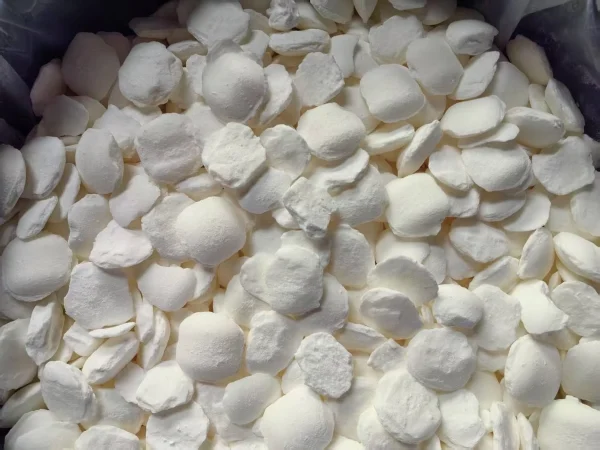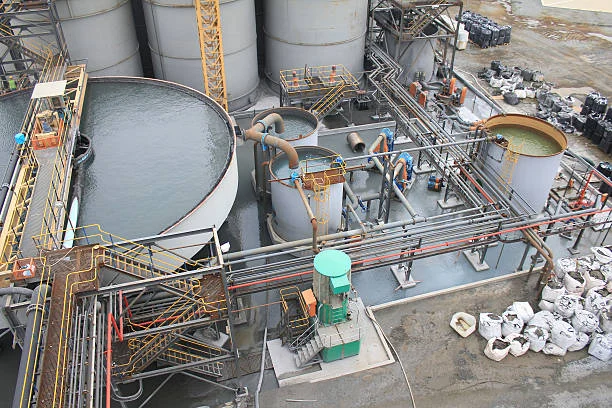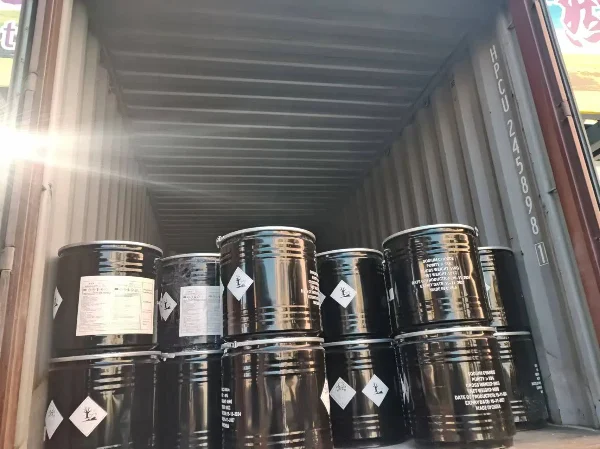
I. Basic Properties and Applications of Sodium Cyanide
Sodium cyanide (NaCN) is an important inorganic chemical raw material, which is widely used in fields such as metallurgy, electroplating, pharmaceuticals, and organic synthesis. Its pure product is in the form of white crystalline particles or powder, which is highly soluble in water and has strong toxicity and corrosiveness. Due to the extremely high toxicity of Sodium Cyanide, its Quality Control and detection technologies are directly related to production safety, Environmental Protection, and human health.

II. The Quality Standard System of Sodium Cyanide
1.National Standards (GB)
The current Quality Standards for sodium cyanide in China are mainly based on "GB/T 19306-2003 Industrial Sodium Cyanide". This standard specifies the technical requirements, test methods, inspection rules, and packaging, storage, and transportation specifications for industrial-grade Sodium cyanide. The specific indicators are as follows:
Main Content (Calculated as NaCN): ≥ 98.0% (Excellent Grade), ≥ 97.0% (First Grade)
Sodium Hydroxide (NaOH): ≤ 0.5%
Sodium Carbonate (Na₂CO₃): ≤ 1.0%
Heavy Metals (Calculated as Pb): ≤ 0.002%
Insoluble Matter in Water: ≤ 0.05%
2.Industry Standards and International Specifications
Industry standards in the metallurgy industry (such as YS/T 53-2020) put forward higher requirements for the purity and impurity content of sodium cyanide, which are applicable to special scenarios such as gold extraction.
International standards (such as ISO 14649) emphasize the purity detection and trace impurity analysis of sodium cyanide to meet the needs of high-end manufacturing.
III. Main Detection Methods of Sodium Cyanide
1.Chemical Analysis Methods
Silver Nitrate Titration Method (Arbitration Method):
Utilize the formation of a stable Ag(CN)₂⁻ complex between Ag⁺ and CN⁻. Titrate with a silver nitrate standard solution and use potassium iodide as an indicator. At the end point, silver iodide precipitation is formed.
Reaction Formula: AgNO₃ + 2NaCN → Na[Ag(CN)₂] + NaNO₃
Acid-Base Titration Method:
It is used to determine the content of sodium hydroxide. Use phenolphthalein as an indicator and titrate with a hydrochloric acid standard solution.
2.Instrumental Analysis Methods
Ion Chromatography (IC):
Separate CN⁻ through an anion exchange column and achieve highly sensitive detection in combination with a conductivity detector, which is suitable for the analysis of trace cyanides.
Spectrophotometry:
Based on the reaction between cyanide and a chromogenic agent (such as isonicotinic acid-pyrazolone) to form a blue compound, and determine the content through absorbance measurement.
Atomic Absorption Spectrometry (AAS):
Detect heavy metal impurities (such as Pb, Cu) and achieve ppm-level precision using flame or graphite furnace atomization technology.
3.Other Detection Items
Moisture Determination: Use the Karl Fischer method or the loss on drying method.
Particle Size Analysis: Use the laser diffraction method or the sieving method.
IV. Detection Process and Key Points of Quality Control
1.Sample Handling
Sodium cyanide is highly hygroscopic. When sampling, use a dry container and store it in a sealed manner to avoid deliquescence affecting the detection results.
For highly toxic samples, the operation should be carried out in a fume hood, and wear protective equipment (such as a gas mask and gloves).
2.Interference Factors and Solutions
Interference of Sulfide: Add hydrogen peroxide to eliminate the influence of S²⁻.
Acidic Environment: Before detection, adjust the pH of the solution to an alkaline level (pH > 11) to prevent the volatilization of HCN.
3.Quality Control Measures
Calibrate the instruments (such as ion chromatographs and balances) regularly.
Use certified reference materials (CRM) for recovery verification (required to be 95%-105%).
Conduct double-person parallel determination, and the result deviation should be ≤ 0.3%.
V. Safety Protection and Environmental Protection Requirements
1.Operation Specifications
The sodium cyanide solution should be stored in a dark place to avoid the decomposition of HCN gas due to light.
For the treatment of waste liquid, add an excessive amount of sodium hypochlorite or hydrogen peroxide to oxidize and decompose the cyanide to a safe concentration (CN⁻ ≤ 0.5 mg/L).
2.Compliance with Regulations
According to the "Regulations on the Safety Management of Hazardous Chemicals" in China, the "Five Doubles" management system (double-person receipt and dispatch, double-person custody, etc.) should be implemented for sodium cyanide.
The detection laboratory needs to pass the CMA certification to ensure the legal effectiveness of the data.
VI. Future Development Trends
Automated Detection Technology: Combine online near-infrared spectroscopy (NIR) with machine learning to achieve real-time monitoring of the production process.
Green Detection Methods: Develop a mercury-free salt titration method to reduce environmental pollution.
Trace Analysis Technology: Ultra-high performance liquid chromatography-mass spectrometry (UHPLC-MS) is used for ppb-level impurity detection.
Conclusion
The quality control of sodium cyanide is the core link to ensure its safe application. Through standardized Detection Methods and strict quality control systems, production risks can be effectively reduced, and the industry can be promoted to develop in a green and intelligent direction. In the future, with the innovation of detection technologies, the quality standards of sodium cyanide will be further refined, providing reliable support for the high-end manufacturing field.
- Random Content
- Hot content
- Hot review content
- Seismic Electric Detonator(Anti static,Water Resistance)
- Food Grade Ammonium Sulphate
- Gold Ore Dressing Agent Safe Gold Extracting Agent Replace Sodium Cyanide
- Phthalic anhydride
- Lithium chloride, 99.0%,99.5%
- Pharmaceutical Intermediate Glycine with High Quality 99%
- Fuel Additive Octane Value Booster Ferrocene
- 1Discounted Sodium Cyanide (CAS: 143-33-9) for Mining - High Quality & Competitive Pricing
- 2China's New Regulations on Sodium Cyanide Exports and Guidance for International Buyers
- 3Sodium Cyanide 98% CAS 143-33-9 gold dressing agent Essential for Mining and Chemical Industries
- 4International Cyanide(Sodium cyanide) Management Code - Gold Mine Acceptance Standards
- 5China factory Sulfuric Acid 98%
- 6Anhydrous Oxalic acid 99.6% Industrial Grade
- 7Oxalic acid for mining 99.6%
- 1Sodium Cyanide 98% CAS 143-33-9 gold dressing agent Essential for Mining and Chemical Industries
- 2High Quality 99% Purity of Cyanuric chloride ISO 9001:2005 REACH Verified Producer
- 3Zinc chloride ZnCl2 for High Molecular Weight Polymers Initiator
- 4High Purity · Stable Performance · Higher Recovery — sodium cyanide for modern gold leaching
- 5High Quality Sodium Ferrocyanide / Sodium Hexacyanoferr
- 6Gold Ore Dressing Agent Safe Gold Extracting Agent Replace Sodium Cyanide
- 7Sodium Cyanide 98%+ CAS 143-33-9










Online message consultation
Add comment: